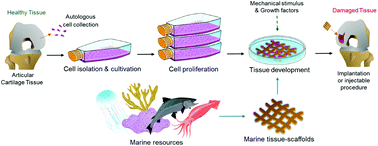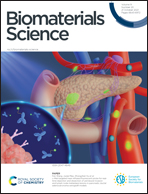Marine origin materials on biomaterials and advanced therapies to cartilage tissue engineering and regenerative medicine
Abstract
The body's self-repair capacity is limited, including injuries on articular cartilage zones. Over the past few decades, tissue engineering and regenerative medicine (TERM) has focused its studies on the development of natural biomaterials for clinical applications aiming to overcome this self-therapeutic bottleneck. This review focuses on the development of these biomaterials using compounds and materials from marine sources that are able to be produced in a sustainable way, as an alternative to mammal sources (e.g., collagens) and benefiting from their biological properties, such as biocompatibility, low antigenicity, biodegradability, among others. The structure and composition of the new biomaterials require mimicking the native extracellular matrix (ECM) of articular cartilage tissue. To design an ideal temporary tissue-scaffold, it needs to provide a suitable environment for cell growth (cell attachment, proliferation, and differentiation), towards the regeneration of the damaged tissues. Overall, the purpose of this review is to summarize various marine sources to be used in the development of different tissue-scaffolds with the capability to sustain cells envisaging cartilage tissue engineering, analysing the systems displaying more promising performance, while pointing out current limitations and steps to be given in the near future.



 Please wait while we load your content...
Please wait while we load your content...